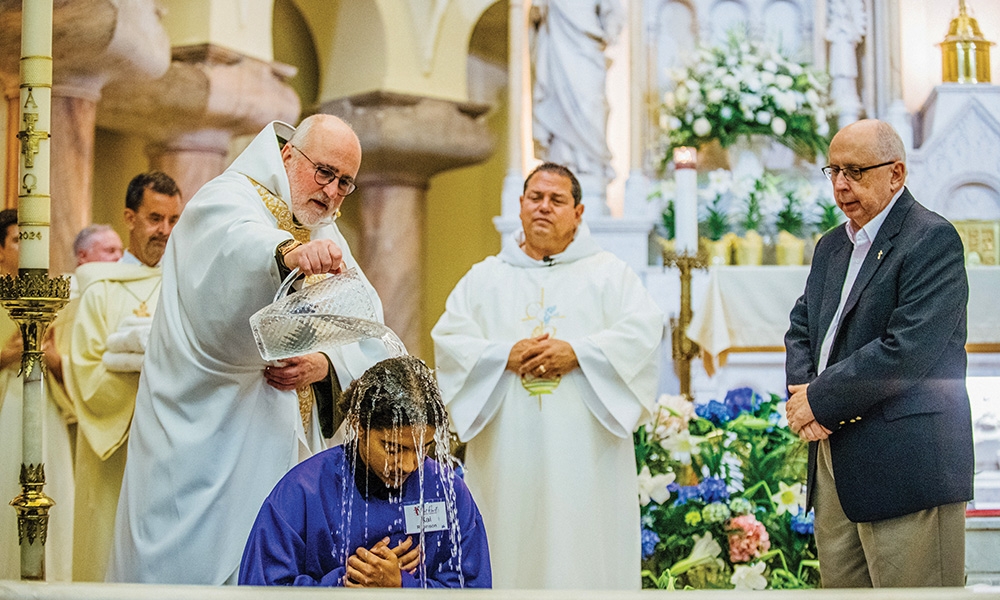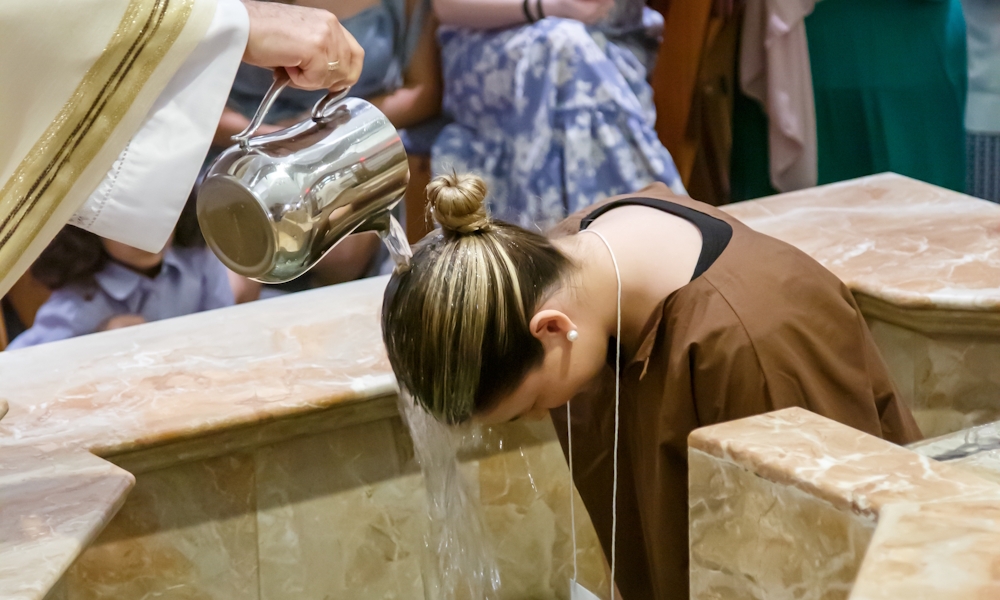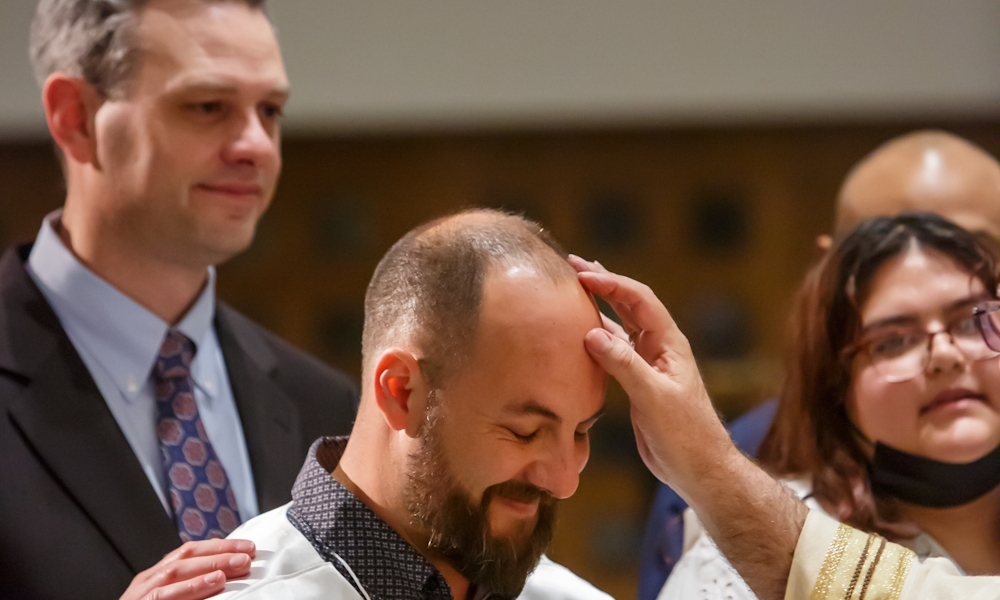
Welcome to the Faith
OCIA is a new name for an ancient tradition
OCIA is a new name for an ancient tradition
Here is something you may not have noticed. Recently the United States Conference of Catholic Bishops (USCCB) approved a new edition of the previously named Rite of Christian Initiation of Adults (RCIA), which among other changes, will now be called the Order of Christian Initiation of Adults (OCIA). Whether you are aware of this or not, it is significant news for those seeking to enter the Church and those who work to prepare them.
Here is something you may not have noticed. Recently the United States Conference of Catholic Bishops (USCCB) approved a new edition of the previously named Rite of Christian Initiation of Adults (RCIA), which among other changes, will now be called the Order of Christian Initiation of Adults (OCIA). Whether you are aware of this or not, it is significant news for those seeking to enter the Church and those who work to prepare them.
The process of entering the Church, receiving the sacraments of baptism, confirmation, and the Eucharist as an adult, is one rich in history and rooted in ancient tradition. In the early years of the Church, initiation was rigorous. The structure included three pre-baptismal stages and one post-baptismal stage, which is the model for the current process for initiation into the Church.
The first stage was the Evangelization and Pre-Catechumenate, or inquiry, phase. Those interested in learning more about the faith would begin a process of discernment and deeper inquiry into the teachings of the Church. After this, they would move into the Catechumenate, or formal instruction, phase. During this time, they would be given more robust instruction on Christian doctrine. They would participate in the Liturgy of the Word at Mass but would be dismissed before the Liturgy of the Eucharist.
The Purification and Enlightenment phase, or final preparation, usually took place during Lent. The catechumens, now called the Elect, would undergo special rites leading up to the Easter Vigil, when they would be received into the Church through baptism, confirmation, and the reception of the Eucharist. After their initiation into the Church, the newly baptized Christians, now called Neophytes, would receive further instruction on the Church’s sacraments, especially the Eucharist.
Throughout the ages and with the growth of the Church, it became rarer for individuals to come into the Church as adults because most people were baptized as infants, and so the process fell out of use in favor of individualized preparation for adults. But if this all sounds familiar, it is because it was restored, more or less intact, following the Second Vatican Council. The process, which would be called the Rite of Christian Initiation of Adults, followed the procedures developed during the time of the Early Church, although some of the terms used were slightly different.
Recently, the USCCB promulgated an updated form of this process. Now known as the Order of Christian Initiation of Adults, they have placed an emphasis on the various rites involved in the process, calling to mind that Christian Initiation is not a one-time rite, but a structured, ongoing journey. There has also been more emphasis placed on mystagogy, or post-baptismal formation. Overall, these adaptations represent more of a pastoral shift than an overhaul of the process.
If you are not Catholic and want to learn more about the Faith, your local parish would be happy to welcome you. After all, Church history demonstrates the doors of initiation are now, and have always been, open to those who are interested.
Order of Christian Initiation of Adults
Experience Christ
Pre-catechumenate
“Inquirer”
- Arise faith
- Initial conversion exploration
- Understanding of the Gospel
Rite of Entrance into Catechumenate
Follow Christ
Catechumenate
“Catechumen”
• Teachings of the foundations of Christian life
• Celebrations of the Word
• Varying length of time
• Pastoral formation Rite of Election
Rite of Election
Changed by Christ
Purification & Enlightenment
“Elect”
- Liturgical catechesis
- Keep scrutinies
- Spiritual recollection and preparation
Rite of Initiation
Sent by Christ
Mystagogy
“Neophyte”
- Ongoing catechesis and pastoral formation
- Personal experience of both the sacraments and community
- Ongoing reflection of spiritual experiences and renews fervor





